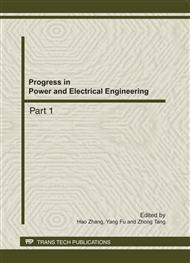p.1179
p.1187
p.1192
p.1197
p.1201
p.1205
p.1210
p.1216
p.1220
Experimental Study on the Breakdown of Gaps in Fire
Abstract:
Some flashover incidents of high-voltage transmission lines are reported to be induced by fire. Though the mechanism of fire induced flashover is not well understood, it is deemed that fire could reduce the insulation strength of air. This paper has compared the breakdown characteristics of gaps in normal air conditions and those in fire. The results show that the breakdown voltage or electric field strength of gaps in fire decreases greatly. The value of breakdown electric field strength in alcohol flame is about 1.454 KV/cm, which is only about 28.8% of that in air. The value of breakdown electric field strength in wood crib fire is about 0.300KV/cm, corresponding to 19.9% of that in air. This study demonstrates that flame and soot particle of fire are responsible for fire induce flashover of high-voltage transmission lines.
Info:
Periodical:
Pages:
1201-1204
Citation:
Online since:
October 2011
Authors:
Keywords:
Price:
Сopyright:
© 2012 Trans Tech Publications Ltd. All Rights Reserved
Share:
Citation:


